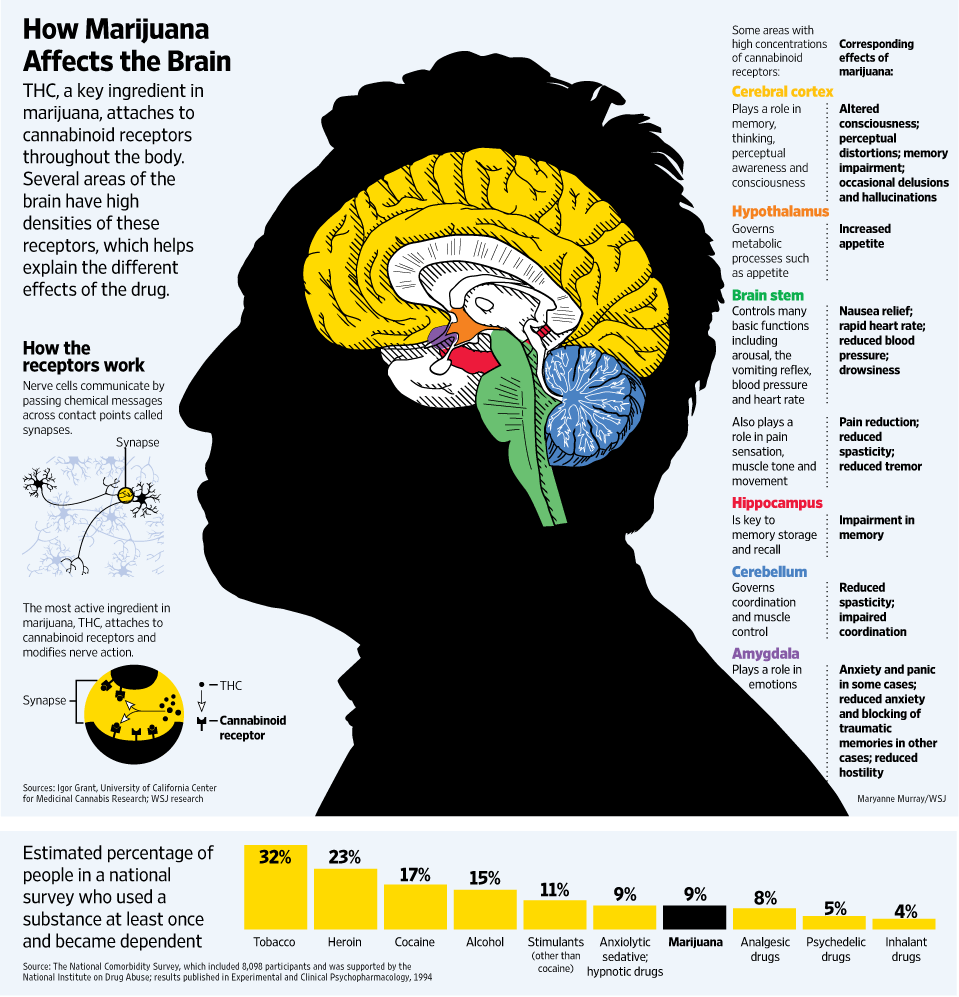This week we discussed an article that claims obesity is a brain disease and that over-nutritious diets change our brain chemistry. In contrast the to “eat less, exercise more” theory, these authors implicate countless mechanisms in the brain as the source of obesity. Mainly, the over-nutrition during development, such as high fat and high carbohydrate diets
Our brain should be able to tell us when we are hungry, “go gather food”, and when we are full, “stop eating”, but in the obese these signaling pathways are modulated and do not work properly. Leptin and insulin are the main signaling molecules in these pathways. However, there is commonly insulin resistance and down regulation of leptin receptors in obese patients brains. The picture below is an image of two mice, the one on the left does not have leptin receptors and is unable to tell when it is full so it just keeps eating, while the one on the right is a healthy mouse.

Obesity is really a downward spiral, once the balance is disrupted, it is hard and nearly immposible to make right.
During development, if exposed to over-nutritious or high caloric diets energy and food intake control will be impaired. This will lead to overnutrition and weight gain, like seen in the mouse above. When we eat, our bodies process the food and produce insulin, but because of the over nutrition the body was already exposed to it is possible that the body is now insulin resistant. This insulin resistance directly impairs our ability to send the signal to stop eating. In addition, over nutrition leads to weight and adipose (fat tissue) gain. Adipose tissues produce a molecule called leptin, which is also responsible for sending a signal to stop eating. But because of the large amount of adipose tissue on obese subjects, leptin resistance occurs. Without either of these signals, food intake continues, and the spiral begins.
In addition to the signal molecules excess nutrition can structurally change our brains. For one it is possible to alter the structure of the protective barrier to the brain, or the blood brain barrier. If this structure is modulated our brains can quite literally become leaky, and let molecule that aren’t supposed to be in our brain, into our brain. These structural changes can then lead to cognitive deficits. So not only is one’s physicality altered, but cognition is as well.
Obesity is already a problem in our country, and childhood obesity is on the rise. It is scary to think that as our population ages, and is exposed to the bad nutrition that is so common in so many households, not only is our population going to be obese, but dumb as well.
Maybe that sounds like a harsh thing to say, but we need to realize that there is a serious epidemic on the rise, and we need to step up and stop it.
Reading this article I kept thinking about the movie WALL-E. We are going to destroy our planet, and our population, all in one fell swoop.
The solution starts at the beginning. Proper diet during development is key, and we better start now before its too late, otherwise our entire population will be in that downward spiral.











